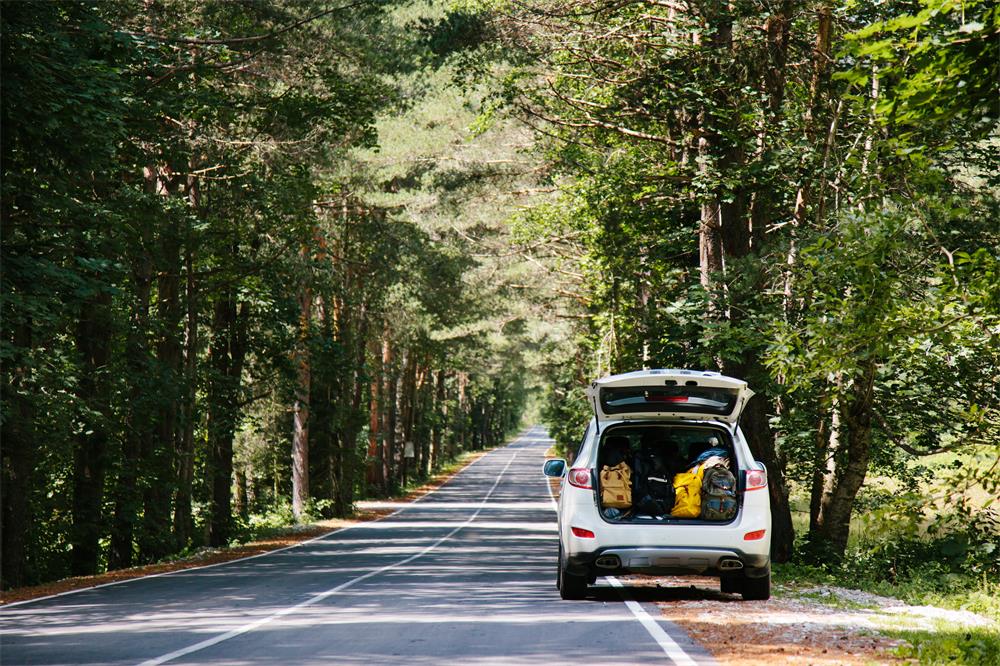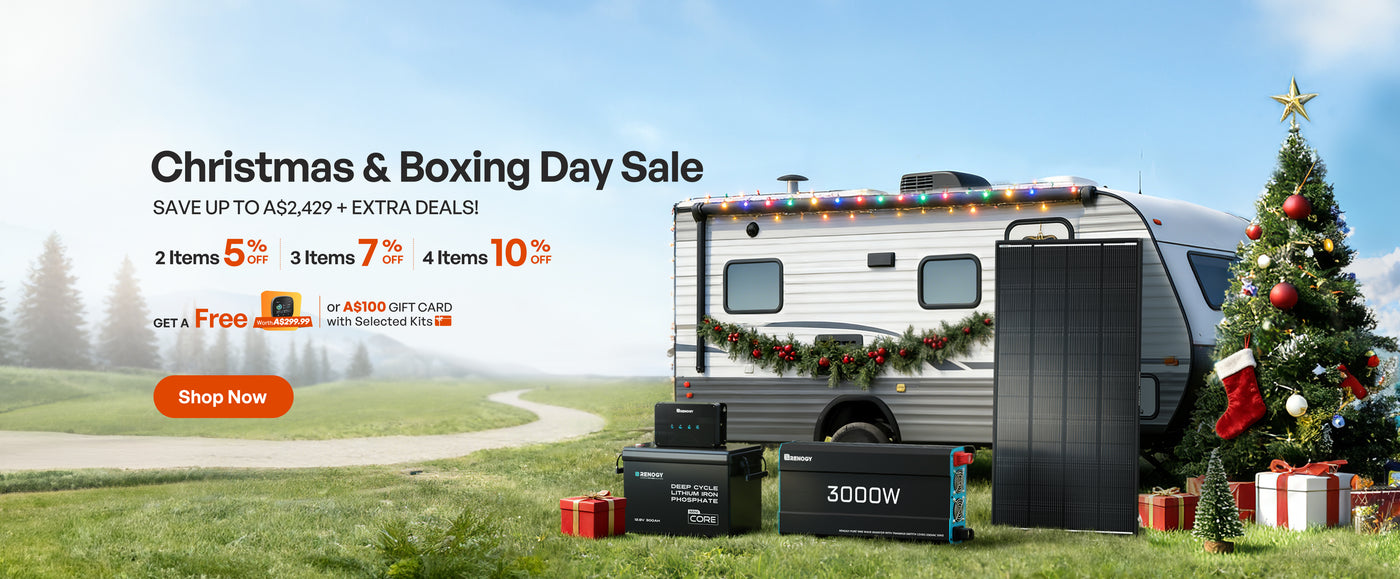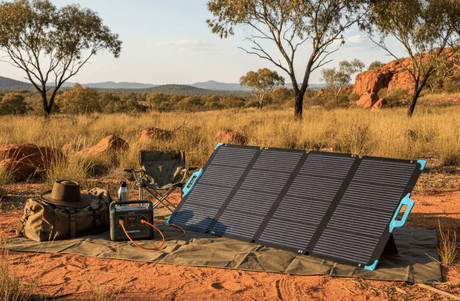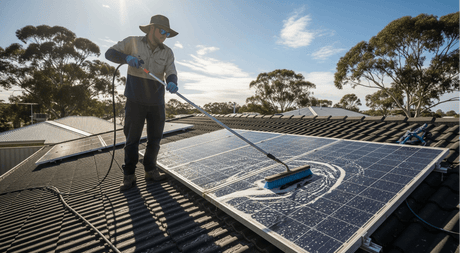Are you planning your first DIY solar project? Have you been considering upgrading your current system with some new solar panel kits? Looking for the most efficient way to convert the DC power generated by your panels into usable alternating current?
If you answered yes to any of the above questions, then you have likely encountered the phrases “solar panel microinverters” and “string inverters.” Inverter technology has been advancing steadily over the last few decades, and there’s a lot of information out there about what you should choose and why. While both are viable options for your home solar system, it is crucial to understand the differences between them.
In order to help you make an informed decision, we have outlined the pros and cons of each option below. We even discuss how you can get the most out of your solar panels through the use of a power optimiser. Our experts even give their pick for the best type of solar inverter for your home.
What Is a String Inverter?
When designing your solar system, you will encounter various types of inverters. One of the most basic types is known as a string inverter or central inverter. This piece of equipment is a single box usually placed near your electric meter or primary service panel.
Most residential solar arrays require only one string inverter. However, larger homes may need a second-string inverter if they are equipped with a high number of solar panels. String inverters create a series circuit between 6-12 solar panels. This setup is referred to as a “series string.”
The energy creation process using string inverters breaks down into three main stages. During stage one, the panels generate DC electricity. This electricity is then sent to the string inverter, where it converts to AC electricity and routes to your residence.
There are several perks to using string inverters. However, there are also a few drawbacks. We have outlined both the pros and cons of string inverters below.
Pros
There are three noteworthy benefits to using string inverters, which are as follows:
Easy to Wire
One of the most appealing aspects of string inverters is that they are extremely easy to wire. Unlike solar panel microinverters, string inverters allow you to purchase only one or two devices. A separate microinverter must be attached to each solar panel, but more on that later.
Since a string inverter has far fewer connections than other solutions, there is less chance of making a mistake. String inverters make for a more straightforward solar panel installation. When deciding which type of inverter to use with your system, you should consider your wiring abilities. If you are relatively inexperienced, the simplicity of string inverters may sway your decision.
Affordable
String inverters are often more affordable than solar panel microinverters. That is because you will only need to purchase one or two devices instead of 6-12 (one microinverter for each panel). If you opt for professional installation, it is essential to note that string inverters also require fewer labor hours.
Simple to Troubleshoot
When it comes time to perform solar panels maintenance, string inverters will make your life a bit easier. That is because these devices are extremely simple to troubleshoot.
Of all the components of your solar array, inverters are the most common cause of malfunctions. If your system is equipped with solar panel microinverters and begins to experience issues, then you must check each device individually. When you have a single-string inverter, you can start the troubleshooting process by inspecting this piece of equipment. If it breaks, you will be able to repair or replace it quickly.
Cons
The potential shortcomings of string inverters include:
Reduced Performance in Partial Shade
When setting up a string inverter, all of your panels must be wired in a series. If a single panel underperforms due to being in the shade, then the energy production of the entire array will diminish. When equipping a home that’s partially in the shade, you may want to utilise solar panel microinverters instead of string inverters.
Compliance Concerns
The solar industry is heavily regulated. As part of these regulatory efforts, some areas have instituted rapid shutdown requirements. If you live in such an area, you will need to equip your string inverter with a rapid shutdown device. Incorporating a rapid shutdown device can be pretty costly, so you should review the requirements in your area before making a purchasing decision.
Short Lifespan
The average lifespan of a string inverter is approximately 8 to 12 years. Conversely, solar panel microinverters can last for as long as 25 years. In fact, many microinverters include a 25-year warranty, which guarantees that your equipment will last for decades.
Lack of Panel-Specific Monitoring
Another shortcoming of string inverters is that they do not allow for panel-specific monitoring. You will only be able to review the cumulative solar production of your system. That makes it difficult to identify any more minor or unique issues with a single panel that may result from debris, cracks, or manufacturing defects.
Harder to Expand Your System
Like most homeowners, you may have an interest in expanding your solar system in the future. If so, then string inverters will make accomplishing that goal more difficult. Solar panel microinverters offer much more flexibility as they are equipped for each individual panel.
What Is a Microinverter?
Microinverters are very similar to string inverters. They are responsible for converting the DC energy produced by your panels into usable AC electricity. However, solar panel microinverters are much smaller than string inverters. In addition, each panel will require a separate microinverter, whereas you can wire a string inverter to an entire array.
Instead of functioning in a string circuit, microinverters get wired into a parallel circuit. That means that your system will be able to obtain the optimal amount of energy from every single panel. You do not have to worry about one underperforming panel affecting your entire system.
Solar panel microinverters offer some pretty significant benefits and only a few drawbacks.
Pros
The advantages to equipping your home with microinverters include:
Generate More Electricity
Microinverters will help you get the most out of your solar panels. Each device will collect and convert the electricity generated from panels on an individual basis. When using a string inverter, the amount of current that the device will bring in is equal to that of the lowest producing panel. That means a panel that’s underproducing will reduce the production of your entire array.
Suitable for Suboptimal Solar Conditions
Sometimes, it is necessary to place solar panels in different directions. If that applies to you, then microinverters are the best option because each panel will produce varying amounts of power throughout the day. Microinverters will help you avoid the current-related issues that are common when using string inverters.
Longer Lifespan
Microinverters are known for their longevity and reliability, which means you are much less likely to encounter an issue when using these devices. They last twice as long as string inverters. The average string inverter only lasts approximately 8-12 years, whereas microinverters include a 25-year warranty.
Built-in Rapid Shutdown Functionality
Microinverters have a built-in rapid shutdown functionality. This feature is extremely helpful if you live in an area that has rapid shutdown requirements. Even if your region does not currently require rapid shutdown capabilities, they may modify electrical codes in the future. By opting for microinverters, you can ensure that your system is already designed to accommodate potential changes to solar panel regulations.
Panel-by-Panel Monitoring
With microinverters, you will be able to monitor each individual panel. If a panel starts underperforming, you will know about it. This allows you to troubleshoot your solar array and identify potential issues quickly.
Easy System Expansion
Microinverters also make it very easy to expand your system. For instance, let’s say that you decide to add three new panels next year. When you order those panels, simply purchase additional microinverters at the same time. You can also order solar panel kits that include all essential components, such as panels, wiring, and microinverters.
Cons
Despite the many benefits of microinverters, they do have a few minor disadvantages as well, such as:
Cost
The primary drawback to microinverters is cost. Since you have to buy individual devices for each solar panel, the total cost of microinverters is often much higher than string inverters. Depending on the size of your system, the price difference may be $1,000 or more.
Must Be Affixed to Your Roof
A string inverter gets mounted near your electrical panel. On the other hand, you must mount microinverters on your roof underneath each panel. Some homeowners are apprehensive about having so much expensive equipment on their roofs.
Complex Maintenance
While microinverters are extremely reliable, all equipment will need maintenance eventually. When a microinverter fails, locating which one needs replacing can be difficult. Even after identifying the faulty device, swapping it out with a new one is very labor-intensive.
What Is a Power Optimiser?
Power optimisers are a valuable piece of equipment that you can pair with string inverters. These devices tune the performance of individual solar panels and track the power output of your panels constantly. Power optimisers then “condition” the electricity before it gets routed to the string inverter.
If you opt to equip your home with a power optimiser, you will also need string converters. You will need to weigh the benefits of this supplemental equipment against the drawbacks.
Pros
There are two main advantages to equipping your string converter with a power optimiser. These include:
Improves Efficiency in Shaded Areas
Power optimisers can increase their efficiency if some of your panels are located in partially shaded areas. These devices can help your panels create as much as 25% more energy.
Individual Panel Monitoring with String Converter
The primary incentive for equipping string converter systems with power optimisers is that they offer individual panel monitoring. You will be able to precisely track the output of every panel and identify productivity issues sooner.
Cons
Power optimisers are not a well-established solar technology. These devices were only introduced to the market recently. As such, these devices have several notable shortcomings, such as:
Cost
Like any new technology, power optimisers are still relatively expensive. By the time you purchase optimisers for each panel, costs will be higher than with a standard string inverter system. Still, power optimisers are cheaper than microinverters.
Compatibility Concerns
Not all string inverters are compatible with power optimisers. That means that you will have limited options when it comes time to purchase your inverter. If you buy the wrong brand or model of a string inverter, then your power optimisers will be practically useless.
Inconsistent Warranty Lengths
Most power optimisers include a warranty of 25 years. However, string inverters have a projected lifespan of only 8-12 years. This inconsistency can be frustrating as you will have to replace your string inverter long before your power optimisers are due for an upgrade. By then, string inverter technology may have evolved and might not be compatible with your aging optimisers.
Microinverters vs. String Inverters: Which Is Best?
If your goal is to install a durable and high-performing solar array, then microinverters are the clear choice. Even though they cost a bit more, microinverters are significantly more reliable and offer many benefits. You can easily offset the higher initial purchase price because microinverters do not need to be replaced as often as string inverters. Plus, microinverters make it easy to expand your solar array should you choose to do so in the future.
Microinverter Solutions from Renogy
If you would like to learn more about microinverters or are ready to order your very own solar panels, Renogy can help. Check out our solar panel calculator to determine how much equipment you need for your home.
Renogy offers top-quality solar equipment, including panels, mounting accessories, microinverters, and much more! Contact us today or explore our site to find the perfect solar solutions to meet your energy needs.







![What Is a DC to DC Battery Charger [Comprehensive Guide]](http://au.renogy.com/cdn/shop/articles/IMG_3829_bd86de74-31d6-49fd-b9d5-265bb723091d.jpg?v=1757582605&width=460)


